
ST EDMUND THE KING, NORTHWOOD HILLS ARCHIVE SEP 2007-AUG 2008
The articles below are taken from my monthly columns in St Edmund's Church parish magazine ("The King"), which includes full details of my organ voluntaries for that month.
FROM THE CONSOLE - AUGUST 2008
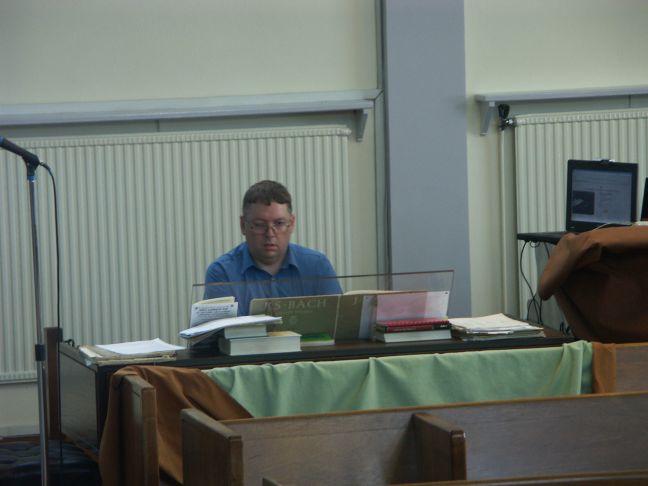
During the Easter Weekend – in between playing for services at St Edmund’s - I was listening to Classic FM’s Top 300 Hall of Fame, as voted by their
listeners. There were two items for solo organ in the Top 100 and a work for organ and orchestra in the Top 30.
The two solo items were Widor’s Toccata (No 66) and Bach’s Toccata and Fugue in D Minor (No 33) – both of which featured in
my recent Marathon recital. The work for organ and orchestra was Saint-Saens’ Third “Organ” Symphony (No 23). As well as a composer, Camille
Saint-Saens was organist of La Madeleine in Paris for over twenty years. Gabriel Faure was one of his successors there. The main theme of the final
movement of the Organ Symphony was later adapted and used in a 1977 pop song “If I had Words” by Scott Fitzgerald and Yvonne Keeley. Both the song
and Saint-Saens’ original were also used in the 1995 film “Babe” which is about a pig who wants to be a sheep dog!
I am writing this column the day after the end of the Organ Marathon. This event was a tremendous success which will hopefully raise lots of
money for the Church Hall roof. The event brought the whole community together be it organising the supper, printing programmes, baking cakes,
making teas and coffees or stewarding at three in the morning! I will give a personal view in the September magazine.
Aug 24th
Prelude – Bach – Bist Du Bei Mir
Postlude – Bach – Prelude & Fugue in C Major
Aug 31st
Prelude – Darke – Meditation on “Brother James’ Air”
Postlude – Clarke – Prince of Denmark’s March
FROM THE CONSOLE - JULY 2008

By the time you read this, there will be less than three weeks until the Organ Marathon, which commences at noon on Tuesday July 15th. Hopefully you have already got
lots of sponsors, although it is not too late if you haven’t. Spare forms are available at the back of the church. Help with security and refreshments
is still needed – please get in touch if you can assist.For a minimum sum of £5, you can submit a request (with a dedication if you wish) and
a preferred hourly slot. Please do so as soon as possible, either by email (organist@saintedmundschurch.org.uk) or in person. Requests and dedications received by Sunday July 6th will be included in the souvenir brochure. The brochure itself, which will include full programme notes for the evening recital, will be available to purchase from the back of the church during the Marathon itself. I cannot guarantee to fulfill
your request, especially if it is somewhat obscure, but I will do my best! Also please note that you cannot request works which I am already performing twice (such as Widor’s Toccata and Bach’s Toccata and Fugue in D Minor).
During the Marathon, you can send me messages of encouragement and last-minute requests by email or text (contact details above). I shall also have a live webcam on my website (www.mark-hammond.co.uk) which will update every couple of minutes.
This is the programme for the Marathon. There will generally be fifteen minute breaks at a quarter to the hour, except immediately before and after the recital where they will be more substantial. Full playlists and latest information can be found on my website.
• 1200-1400 J.S.Bach - Preludes, Toccatas and Fugues
• 1400-1500 An Elgar Hour
• 1500-1600 Music from Scandinavia (Grieg, Sibelius and Buxtehude)
• 1600-1700 Children’s Experience
• 1700-1845 Handel’s “Messiah”
• 1930-2100 Organ Recital (Tickets required)
• 2200-0000 Music from France (Boellman, Couperin, Vierne)
• 0000-0200 Midnight Mediation on organ and piano
• 0200-0300 Anniversary Hour (Vaughan Williams, Puccini, Messiaen)
• 0300-0400 Music from Germany and Austria (Mozart, Karg-Elert, Haydn)
• 0400-0500 Music for the Church Year
• 0500-0600 Music from Italy (Albinoni, Caccini, Pergolesi)
• 0600-0800 J.S.Bach - Chorale Preludes and Miscellaneous Works
• 0800-1000 Music from Great Britten (Handel, Stanford, Bridge)
• 1000-1200 A Musical Miscellany
July 6th
Prelude – Vaughan Williams – Prelude on “Rhosymedre”
Postlude – Vaughan Williams – Prelude on “Hyfrydol”
July 13th
Prelude – Grieg – Music from “Peer Gynt”
Postlude – Widor - Symphony No 5 (1st Movement)
July 20th
Prelude – Handel – Pastoral Symphony (“Messiah”)
Postlude – Handel – Overture (“Messiah”)
July 27th
Prelude – Cosma – Promenade Sentimentale
Postlude – Lefevre-Wely – Sortie in E Flat
FROM THE CONSOLE - JUNE 2008

At noon on Tuesday July 15th, I shall be embarking on a 24 hour Organ Marathon in aid of the Church Hall Roofing Fund. This event was launched
at the 10.00 service on Sunday May 18th and sponsorship forms are now available. Please take one and encourage all your friends, neighbours and colleagues to
sponsor the event.
At 7.30pm on the Tuesday evening there will be a recital featuring music by Bach (Toccata and Fugue in D Minor), Cesar Franck (Choral No.3) and
Charles Widor (Symphony No 5, concluding with the famous Toccata) as well as pieces by Elgar, Barber and Gigout. This will be followed by refreshments
in the Hall. Tickets to this event will be available separately.
On the Tuesday afternoon I am planning to hold a children’s hour. This will include a demonstration of how the organ works and a chance
to have a go as well as playing some of their requests. The remainder of the Marathon will be made up of themed segments (and brief rest periods!). Full
details and playlists can be found on my website (www.mark-hammond.co.uk) and in the souvenir brochure, which will also include detailed programme notes
for the evening recital and information on the organ and organist.
I shall also be taking requests for specific pieces of music (on either organ or piano). These cost a minimum of £5 and must be submitted in
plenty of time (organist@saintedmundschurch.org.uk) in order for me to source the sheet music where necessary. You can also state a preferred
time of playing, although this cannot be guaranteed, and submit a dedication which will be included in the souvenir brochure.
During the marathon, I will have a live webcam on my website which will update every couple of minutes. I will also welcome messages of encouragement by
email and text as well as your presence in person. Full contact details will be available on my website and in the souvenir brochure.
Help with refreshments and security will be needed for the duration of the Marathon and I hope you will be able to give a little of your time.
Jun 1st
Prelude – Prelude (“Dream of Gerontius”) – E.Elgar
Postlude – Organ Sonata (1st Move.) – E.Elgar
Jun 8th
Prelude – Adagio (Cello Concerto) – E.Elgar
Postlude – Toccata – G.Mushel
Jun 15th
Prelude – Nimrod (Enigma Vars.) – E.Elgar
Postlude – Grand March (Aida) – G.Verdi
Jun 22nd
Prelude – Sonata No 4 (3rd Move.)- F.Mendelssohn
Postlude - No 4 (1st Move.)- F.Mendelssohn
Jun 29th
Prelude – Choral No 3 in A Minor – C.Franck
Postlude – Final & Marche – L.Boellmann
FROM THE CONSOLE - MAY 2008
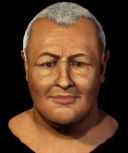
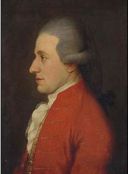
I was interested in two recent articles which will literally change the way we look at the two great composers Bach and Mozart.
The first article is about Scottish forensic anthropologist Dr Caroline Wilkinson of Dundee University, who has used the bones of Johann Sebastian Bach (left) and a computer model to come up with an image of a thick-set man with closely-shorn white hair which is very different to the portraits we have of the great composer which contemporary critics said were so inaccurate that it might as well have been the composer Handel. The forensically reconstructed face is currently on display at the Bach Museum in Eisenach. Bach spent the first ten years of his life in the German town until he became an orphan and went to live with his elder brother. My voluntaries this month feature some of Bach's greatest preludes
The second article was about the discovery of a new portrait of Mozart (right). Until now the enduring image has been largely based on a posthumous portrait by Barbara Kraft. The new picture, probably painted by Joseph Hickel, a painter to the Imperial Court of Austria shows the great composer in 1783 aged 27. He is dressed in a red tunic and a white ruff, with a wig of grey hair and an elegant but slightly hooked nose. It has been authenticated by an eminent musical scholar. Mozart had written to one of his patrons the year before describing his desire for a "beautiful red coat" that matches the one painted. I shall be playing the second movement from “Eine Kleine Nachtmusik” - originally written for string chamber orchestra in 1787 - at the end of the month.
May 4th
Prelude - Adagio for Strings - S.Barber
Postlude - Prelude in B Minor - J.S.Bach
May 11th
Prelude - Chanson de Nuit - E.Elgar
Postlude - Prelude in A Minor - J.S.Bach
May 18th
Prelude - Chanson de Matin - E.Elgar
Postlude - Prelude in F Minor - J.S.Bach
May 25th
Prelude - Romance - W.A.Mozart
Postlude - Prelude in C Minor - J.S.Bach
FROM THE CONSOLE - APRIL 2008
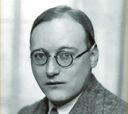
What do I have in common with Sir Hubert Parry - composer of the hymns “Jerusalem” and “Dear Lord and Father of Mankind? We were both born in Bournemouth.
Although born in Bournemouth in 1848, Parry grew up in Gloucestershire and was educated at Eton College. He went on to read Law and Modern History at Oxford University. After graduating in 1870, Parry worked as an underwriter at Lloyds whilst continuing his musical studies. He left there in 1877, confident that he could make a living as a musician. He joined the staff of the Royal College of Music in 1884 and became its Director thirteen years later, a post he held until his death in 1918. He was knighted in 1898 and succeeded Sir John Stainer as Professor of Music at Oxford University two years later.
As well as the aforementioned hymns, arguably Parry's greatest work is his anthem “I Was Glad”. A setting of verses from Psalm 122, it was written for the coronation of King Edward VII in 1902 and has been performed at all subsequent coronations.
Continuing the Bournemouth connection, composer Percy Whitlock (pictured above) died there. Whitlock was born in Chatham in Kent in 1903. After studying at the Royal College of Music, he moved to Bournemouth in 1930 where he was Director of Music at St Stephen's Church until 1935 and Municipal Organist at the Pavilion Theatre until his untimely death from a stroke at the age of just 42. The Pavilion organ was built by John Compton in 1929 and was designed to play both the classical and popular repertoire, including a full percussion section and a rising and falling console. Many years ago, I was fortunate to have the chance to play this historic instrument and it can still be heard weekly throughout most of the year.
April 6th
Prelude - Allegretto - Percy Whitlock
Postlude -Nun Danket - S.Karg-Elert
April 13th
Prelude - Adagio in C - J.S.Bach
Postlude - Fugue in C - J.S.Bach
April 20th
Prelude - Chorale Prelude on “Eventide” - H.Parry
Postlude - Carillon - L.Vierne
April 27th
Prelude - Allegro Cantabile (Symphony No 5) - C.Widor
Postlude - Toccata - E.Gigout
FROM THE CONSOLE - MARCH 2008

On Ash Wednesday, I was listening to Choral Evensong from St Alban’s on Radio 3. They performed the beautiful Allegri “Miserere. Gregorio Allegri was a seventeenth-century singer, composer and priest who lived all his life in Rome. The “Miserere” is a setting of Psalm 51 (Have mercy upon me,
O God, according to thy loving-kindness: according unto the multitude of thy tender mercies blot out my transgressions) for use in the Sistene Chapel during Tenebrae in
Holy Week. It was written exclusively for the Papal Choir and, reputedly, excommunication was the penalty for anyone caught copying the manuscript or
performing it elsewhere. A number of transcriptions were attempted but the most successful was by the fourteen year old Mozart during a trip to the Vatican.
He wrote it down entirely from memory on one hearing and returned a couple of days later to make minor corrections. Later he met the British Historian
Dr Charles Burney who published the piece in London in 1771. After publication, the ban was lifted and the piece has become one of the most popular choral pieces.
It has a notoriously difficult soprano line which goes up to a top C at one point. It was recorded by the treble Roy Goodman with King’s College Cambridge in 1963.
Goodman has gone on to become one of Britain’s foremost conductors and is currently Principal Guest Conductor of the English Chamber Orchestra.
At noon on Tuesday July 15th, I shall be embarking on a 24 hour organ marathon in aid of the Church Hall Roof. Plans are currently at an early stage,
but there will be a formal recital at 7.30pm on the Tuesday evening and I also hope to have a children’s hour in the afternoon. I will have more information
in the coming months, including details of how to sponsor me and request specific pieces of music. A round-the-clock team of stewards and refreshment makers
will also be required.
Mar 2nd
Prelude – Duetto – Percy Whitlock
Postlude – Prelude & Fugue No 5 – J.S.Bach
Mar 9th
Prelude – Prelude on “Rockingham” – C.Parry
Postlude – Prelude & Fugue No 6 – J.S.Bach
Mar 16th (Palm Sunday)
Postlude – Prelude & Fugue No 7 – J.S.Bach
Mar 22nd (Easter Saturday)
Prelude – Adagio (Symphonie No 5) – C.Widor
Postlude – Toccata (Symphonie No 5) – C.Widor
Mar 23rd (Easter Day)
Prelude – Toccata in D Minor – J.S.Bach
Postlude – Fugue in D Minor – J.S.Bach
Mar 30th (Indisposed)
Prelude – Aria – Flor Peeters
Postlude – Prelude & Fugue No 8 – J.S.Bach
FROM THE CONSOLE - FEBRUARY 2008
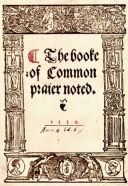
If people were asked to name the composer most often heard at St Edmund’s, few would come up with John Merbecke. His Gloria and Creed are sung every week and we will
be performing his full mass setting throughout Lent. Born at the start of the sixteenth century, Merbecke was by 1531 a chorister at St George’s Chapel, Windsor
and was organist from 1541 until his death in 1585. In 1543 he was tried and convicted for heresy and was condemned to death at the stake. He was reprieved
by Henry VIII only through the personal intervention of the Bishop of Winchester. In 1550, he published his “Booke of Common Praier Noted” for use with
Edward VI’s 1549 Book of Common Prayer with melodies partly adapted from Gregorian Chant. It was rendered obsolete with the 1552 prayer book revision
and lay unused for three centuries until it was adapted for the 1662 liturgy and still widely used worldwide in many protestant traditions.
My postludes for February and March are Bach's "Eight Short Preludes and Fugues". It is thought unlikely that Bach actually wrote these
fine miniatures and they may well have been written by one of his pupils, Johann Ludwig Krebs (1713-1780).
Feb 3rd
Prelude: Ave Maria - Caccini
Postlude: Prelude and Fugue No 1 – J.S.Bach
Feb 10th
Prelude: Minuet (Water Music) – G.F.Handel
Postlude: Prelude and Fugue No 2 – J.S.Bach
Feb 17th
Prelude: Chanson de Matin – E.Elgar
Postlude: Prelude and Fugue No 3 – J.S.Bach
Feb 24th
Prelude: Es Ist Ein' Ros' Entsprungen - J.Brahms
Postlude: Prelude and Fugue No 4 – J.S.Bach
FROM THE CONSOLE - JANUARY 2008

Father Bruce (pictured above at the presentation) and Barbara have chosen the music for their final service on January 6th.
The Prelude is “Nimrod” from Elgar’s Enigma Variations.
The work was written in 1899 and dedicated to “my friends pictured within”. The ninth variation – Nimrod – was written for Augustus Jaeger,
Elgar’s best friend, and is said to depict a night-time walk the two of them had during which they described the slow movements of Beethoven's music.
Nimrod is the biblical hunter and Jaeger is the German word for hunter.
The Mass setting is the Short (or Dorian) Service by Adrian Batten. He was born in Salisbury
in 1591 and was a chorister (and later organ scholar) at Winchester Cathedral. He later held the post of lay vicar (choirman) at both Westminster Abbey and
St Paul’s Cathedral and also served as organist at the latter. His compositions consist of anthems and services (of which eight full settings survive).
The main source for this Short service is John Barnard, a canon at St Paul’s Cathedral who transcribed the work around 1625. The original service consists of ten
movements - there is no Benedictus or Agnus Dei and these have been subsequently reconstructed by editor Maurice Bevan from other movements of the service.
The first anthem is “Ave Verum Corpus" by Wolfgang Amadeus Mozart. It was written in 1791
- the last year of Mozart’s short life. It was dedicated to his friend Anton Stoll who was choirmaster at a church in Baden, near Vienna, and
it was first performed there on the feast of Corpus Christi that year.
The second anthem is “A Clare Benediction” with words and music by John Rutter (Pictured above).
This work was written by Rutter in the late nineties for Clare College, Cambridge, where he was both undergraduate and later Director of Music.
Clare College is the second oldest (Peterhouse, my Alma Mater, is the oldest) and was named after Elizabeth de Clare, Granddaughter of Edward I, who
provided an endowment in 1338 which provided for twenty fellows and ten students. Clare itself is a town and castle in Suffolk whose importance was
largely due to its position on a major route from East Anglia to the Midlands. While I was studying at Cambridge, I had my organ lessons with David Sanger
in the Chapel at Clare College. This is a beautiful piece, although the opening bears an uncanny resemblance to the beginning of “Oh what a Beautiful Morning”!
The Postlude is the Grand March from “Aida” by Giuseppe Verdi and was
first performed in Cairo in 1871. Aida, an Ethiopian princess, is captured and brought into slavery in Egypt. A military commander, Radames,
struggles to choose between his love for her and his loyalty to the Pharaoh. To complicate the story further, Radames is loved by the Pharaoh's
daughter Amneris, although this love is not reciprocated.
I have enjoyed working with Father Bruce over the past eight years and wish him and Barbara all the best for the future.
Jan 6th
Prelude – “Nimrod” (Enigma Variations) – E.Elgar
Postlude – Grand March from “Aida” – G.Verdi
Jan 13th
Prelude – Prelude on “Dix” – M.Archer
Postlude – Postlude on “Dix” – W.Harris
Jan 20th
Prelude – Prelude on “Stuggart” – F.Peeters
Postlude – Trumpet Voluntary – J.Stanley
Jan 27th
Prelude – Chorale Prelude on “Melcombe” – C.Parry
Postlude – Songs of Praise – R.Prizeman
FROM THE CONSOLE - DECEMBER 2007

One of the things I love about Christmas is, unsurprisingly, the music. When I was a child, my parents banned me from playing carols on the piano until the beginning of November! Each year I still cannot wait to dig the Christmas CDs out.
People often ask me about my favourite carol and this got me thinking. Well here, listed alphabetically, are my current ten favourite seasonal offerings. Click on the title to listen
A Spotless Rose - Herbert Howells
Herbert Howells was born in Gloucestershire in 1892. "A Spotless Rose", written in 1919, is the third of three Carol-Anthems. According to the composer, it was written "after idly watching some shunting trains from the window of a cottage..which overlooked the Midland Railway". The piece has a timeless, almost plainsong-like quality to it. Today Howells is probably best-known for his hymn tune "Michael" set to Robert Bridge's words "All My Hope on God is Founded". It was written in memory of his only son who died of Meningitis at the age of just nine.
Bethlehem Down - Peter Warlock
I originally wrote about this wonderful piece in the magazine three years ago. Peter Warlock was born Phillip Heseltine in 1894 and his pseudonym reflects his interest in the occult. Running short of money, Warlock and poet Bruce Blunt wrote "Bethlehem Down" for the Daily Telegraph's annual carol-writing competition in 1927. The carol won and they apparently used the winnings to finance an "immoral carouse". Sadly he suffered bouts of depression and killed himself in 1930 at the age of just 36.
Hymne a la Vierge - Pierre Villette
This is a recent discovery which I heard on the radio last year. Pierre Villette was born in 1926. He studied at the Paris Conservatoire and composer Pierre Boulez was among his contemporaries there. Villette was director of Conservatoires in Besancon and Aix en Provence, where he died in 1998. Villette's choral music was championed in the England by Dr Donald Hunt, then Organist at Worcester Cathedral. This unaccompanied carol "Hymne a la Vierge", written in 1955, is probably his best-known composition.
In the Bleak Midwinter - Harold Darke
Harold Darke was organist at St Michael's, Cornhill in the city of London for fifty years and achieved fame for his series of Monday lunchtime concerts where he gave over 1800 recitals. During the Second World War he deputised as organist at King's College, Cambridge while the incumbent, Boris Ord, was serving with the Royal Air Force (Howells was deputising up the road at St John's College). His beautiful setting of Christina Rosetti's poem was written when Darke was just 23. Verses for solo treble and tenor alternate with unaccompanied choir.
Lullay, Lulla, Thou Little Tiny Child - Kenneth Leighton
Kenneth Leighton was born in Wakefield in 1929 and was a Chorister at the Cathedral there. He studied music at Oxford University and later returned as a Fellow and Music Lecturer. His carol "Lullay, Lulla" for soprano solo and unaccompanied choir was written in 1956 and uses the words of the Coventry Carol. It was named after the Pageant held in the Midlands town during the middle ages. This famous procession took place on the feast of Corpus Christi where ten craft guilds told the story of the world from Creation to Doomsday.
Nativity Carol - John Rutter
This is my favourite of the sixteen or so original carols John Rutter has composed. He was educated at Highgate School. John Tavener was a fellow pupil and both he and Rutter used to compose pieces for the school carol service. One of these pieces was the "Shepherd's Pipe Carol", arguably Rutter's best-known carol and certainly the most-recorded - written at the age of just eighteen! He then went on to read music at Clare College, Cambridge and was later Director of Music there.
Noel Nouvelet - Trad.French, arr.S.Jackson
This is a traditional French 15th Century carol, sometimes sung at Easter to the words "Now the Green Blade Riseth". This arrangement is by Stephen Jackson, director of the BBC Symphony Chorus since 1989. It was written for the Choir of the Chapels Royal at the Tower of London and was first performed in 1986. It is regularly performed at the annual Christmas Eve Service of Nine Lessons and Carols at King's College, Cambridge (pictured above).
No Small Wonder - Paul Edwards
This beautiful piece is another fairly recent discovery. Aline and I heard it performed a couple of years ago in Winchester Cathedral and both instantly fell in love with it. Paul Edwards was a Chorister at St Paul's Cathedral and a Lay Clerk at Peterborough Cathedral. He is currently Organist and Choirmaster at All Saints, Kempston in his native Bedfordshire. As well has having over 400 compositions to his name, Edwards leads a busy life as teacher, singer, accompanist and examiner.
The Lamb - John Tavener
John Tavener was born in Wembley in 1944 and was, like John Rutter, educated at Highgate School. He went on to study at the Royal Academy of Music, where his composition teacher was Lennox Berkeley. “The Lamb”, with words by William Blake (who also wrote the words to “Jerusalem”), dates from 1982 and was written for Tavener's three-year-old nephew and was composed from seven notes in one afternoon. His “Song for Athene” was performed at the funeral of Diana, Princess of Wales in 1997.
The Three Kings - Peter Cornelius
Peter Cornelius was a German romantic composer who lived in Weimer in the circle of Franz Liszt and later became friends with Richard Wagner. His song "The Three Kings" is taken from a set of six Christmas songs and dates from the 1850s. The tune is sung by a bass soloist while the unaccompanied choir sing the Epiphany chorale "How Brightly Shines the Morning Star".
May I take this opportunity to wish all of you a merry Christmas and a happy new year. If you have any comments or questions I would be very pleased to hear from you - email me. Next month I shall write about the music that Father Bruce and Barbara have chosen for their final service at St Edmund's on January 6th.
Dec 2nd
Prelude - O Come O Come Emmanuel - C.Hand
Postlude - Crown Imperial - W.Walton
Dec 9th
Prelude - Advent Reflections - R.Bonighton
Postlude - Wachet Auf - J.S.Bach
Dec 16th
Prelude - Berceuse ("Peterhouse Chapel Windows Suite") - B.Ferguson
Postlude - Variations on "Herr Jesus Hat Ein Garchen" - F.Peeters
Dec 23rd (10.00)
Prelude - In Dulci Jubilo - D.Buxtehude
Postlude - Nun Komm' Der Heiden Heiland - J.S.Bach
Dec 23rd (6.30)
Prelude - Six Interludes on Christmas Carols - W.Lloyd-Webber
Postlude - In Dulci Jubilo - J.S.Bach & Toccata - C.Widor
FROM THE CONSOLE - NOVEMBER 2007
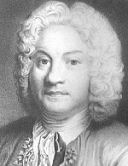
Born on November 10th 1668, Francois Couperin - Couperin le Grand - was the most renowned of the Couperin dynasty of 17th and 18th Century musicians. He succeeded both his uncle Louis and his father Charles as organist at the Church of Saint Gervais in Paris. At the age of just 25 he became one of the four organists of the Royal Chapel and a year later was appointed harpsichord teacher to the royal family. Best known for his harpsichord music (he wrote over 200 pieces for the instrument plus a hugely influential keyboard tutor), Couperin had written two organ masses by the age of 21, one for the Parishes and one for the Monasteries. The organist would have alternated with the choir singing the plainchant of the mass ordinary, a practice known as “alternatim”. The organ mass is primarily an improvisatory art, long practiced by countless organists in innumerable churches, and one still particularly strong in France to this day.
Nov 4th
Prelude – Tierce en Taille – F.Couperin
Postlude – Dialogue sur les Trompettes – F.Couperin
Nov 11th (10.00am)
Prelude – Nimrod – E.Elgar
Postlude – Fame and Glory – A.Matt
Nov 11th (3.30pm)
Prelude - Pavane - G.Faure
Postlude - Sicilienne - M.Paradis
Nov 18th
Prelude – Lyric Melody - C.Armstrong-Gibbs
Postlude – Jubilate - C.Armstrong-Gibbs
Nov 20th
Prelude - Psalm Prelude, Set 1, No 1 - H.Howells
Postlude - Toccata - C.Widor
Nov 25th
Prelude – Vocalise – S.Rachmaninov
Postlude – Saint Paul before Aggripa ("Peterhouse Chapel Windows Suite") - B.Ferguson
FROM THE CONSOLE - OCTOBER 2007
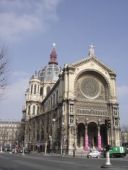
Eugene Gigout was born in Nancy in 1844. He studied with Camille Saint-Saens and later taught Gabriel Faure. He held the post of organist at the Eglise St Augustin in Paris for 62 years. This nineteenth-century Byzantine-style church is situated near the Place de la Concorde and the organ was originally built by Englishman Charles Barker, who was famous for designing a pneumatic system which revolutionised organ-building. Gigout is now almost exclusively known for his “Toccata” in B Minor, which forms the fourth of “Ten Pieces” written in 1890. He was the uncle of the organist and composer Leon Boellmann - best known for his “Suite Gothique” - and adopted his nephew after Leon's parents died. At the age of 19, Boellmann was appointed organist at the Church of St Vincent de Paul near the Gare du Nord, a post he held until his untimely death at the age of just 35.
Oct 7th
Prelude - Thou Art Peter (Peterhouse Chapel Windows Suite) - B.Ferguson
Postlude - Magnificat Primi Toni - J.Pachelbel
Oct 14th
Prelude - Largo (“Xerses”) - G.Handel
Postlude - Overture (“Messiah”) - G.Handel
Oct 21st
Prelude - Musette in G - G.Handel
Postlude - Organ Concerto No 5 (1st Movement) - G.Handel
Oct 28th
Prelude - Prière à Notre Dame - L.Boellmann
Postlude - Toccata in B Minor - E.Gigout
FROM THE CONSOLE - SEPTEMBER 2007
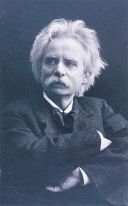
September 4th sees the 100th anniversary of the death of the Norwegian composer Edward Grieg. He was born in Bergen in 1843 and received his first piano lessons from his mother. At the age of 15 he was sent to the Leipzig Music Conservatoire where he concentrated on the piano. He achieved good grades in most areas, the exception being the organ, which was mandatory for piano students at the time! At the end of his life, Grieg recorded a number of 78rpm records which show his great virtuosity as a pianist. His best-known composition is arguably the A Minor Piano Concerto, written in 1868 and given a performance two years later by the great Hungarian composer and pianist Franz Liszt. Tchaikovsky was also a great admirer of Grieg’s music.
Grieg wrote the incidental music to Ibsen’s play “Peer Gynt” which had its first performance in Christiania (now Oslo) in 1876. It amounts to ninety minutes of music which Grieg later turned into two suites, each containing four pieces, and I shall be performing three of these pieces during the month.
Sep 2nd
Prelude – Morning (“Peer Gynt”) – E.Grieg
Postlude – Grand Choer in D – A.Guilmant
Sep 9th
Prelude – Soloveig’s Song (“Peer Gynt”) – E.Grieg
Postlude – Arrival of the Queen of Sheba – G.Handel
Sep 16th
Prelude – The Death of Ase (“Peer Gynt”) – E.Grieg
Postlude – Praise the Lord O My Soul – S.Karg-Elert
Sep 23rd
Prelude – Nessun Dorma (“Turandot”) – G.Puccini
Postlude – Sortie – L.Lefebure-Wely
Sep 30th
Prelude – Promenade Sentimentale – V.Cosma
Postlude – Now Thank We All Our God - S.Karg-Elert




















